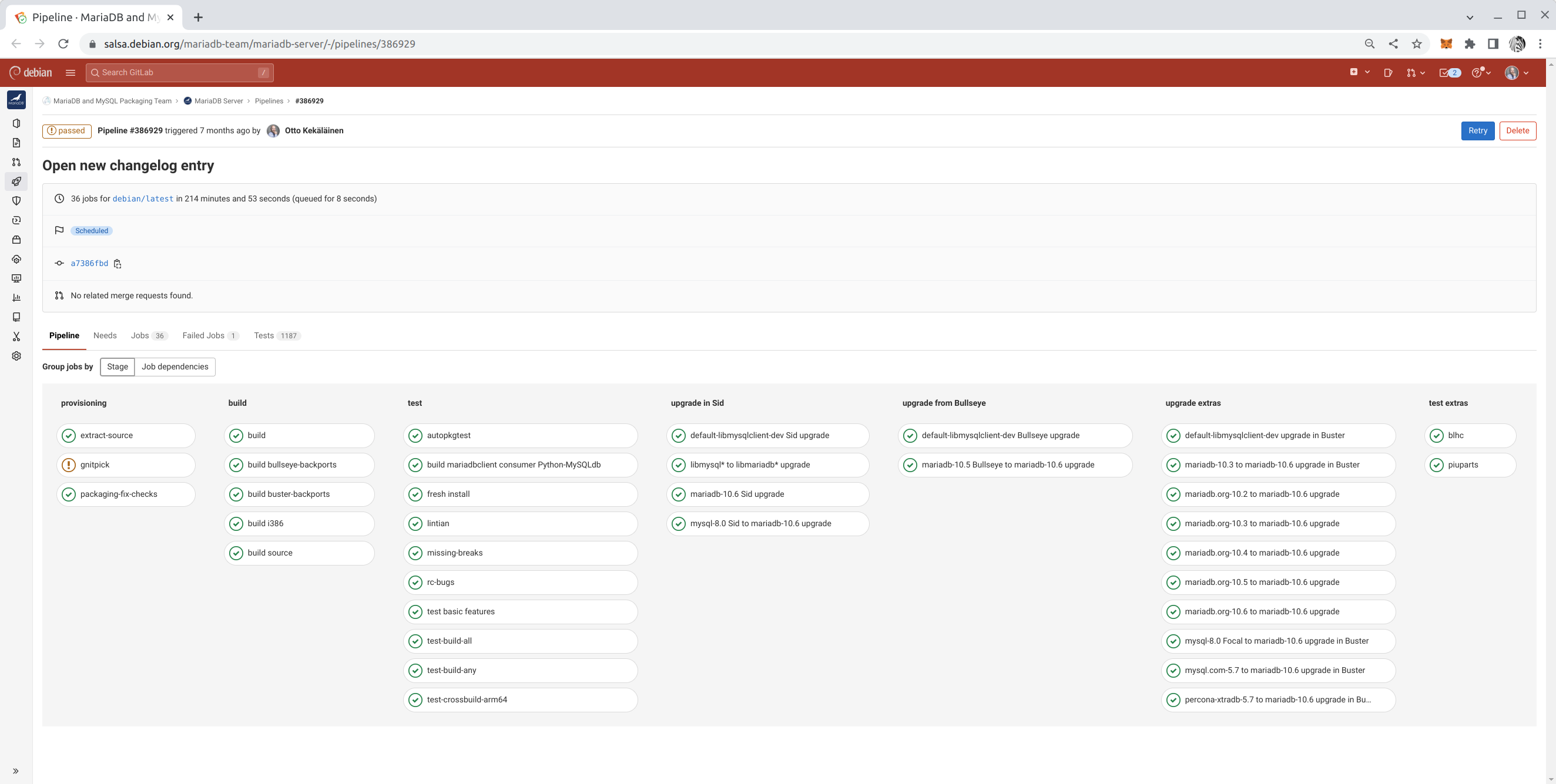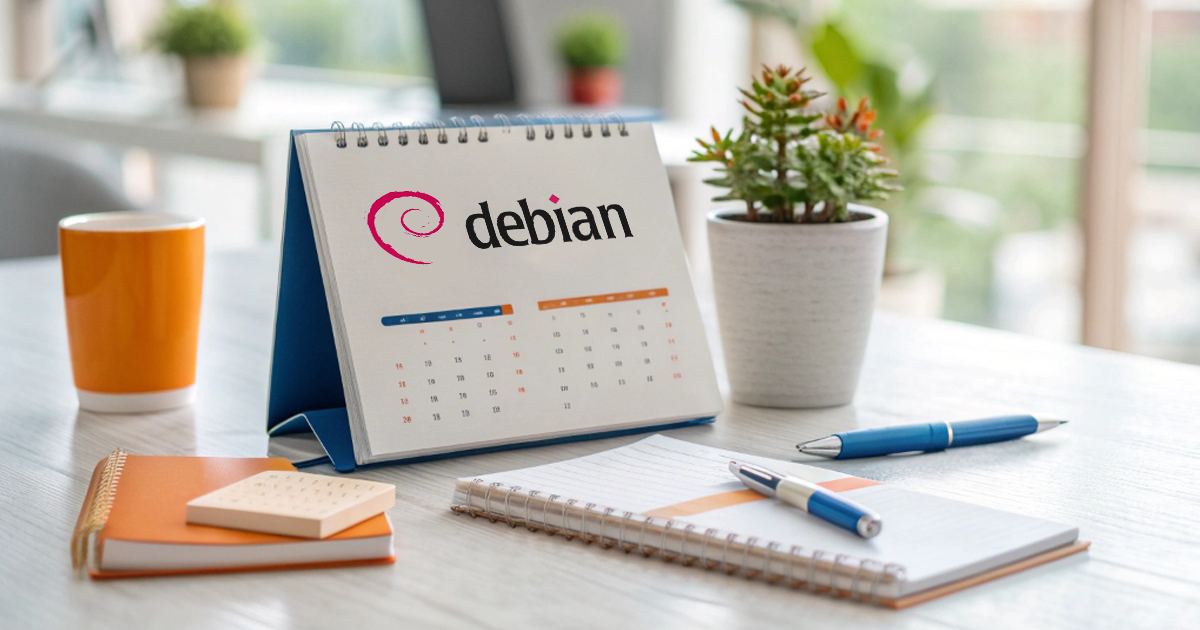Becoming a Debian maintainer is a journey that combines technical expertise, community collaboration, and continuous learning. In this post, I’ll share 10 key habits that will both help you navigate the complexities of Debian packaging without getting lost, and also enable you to contribute more effectively to one of the world’s largest open source projects.
1. Read and re-read the Debian Policy, the Developer’s Reference and the git-buildpackage manual
Anyone learning Debian packaging and aspiring to become a Debian maintainer is likely to wade through a lot of documentation, only to realize that much of it is outdated or sometimes outright incorrect.
Therefore, it is important to learn right from the start which sources are the most reliable and truly worth reading and re-reading. I recommend these documents, in order of importance:
- The Debian Policy Manual: Describes the structure of the operating system, the package archive, and requirements for packages to be included in the Debian archive.
- The Developer’s Reference: A collection of best practices and process descriptions Debian packagers are expected to follow while interacting with one another.
- The git-buildpackage man pages: While the Policy focuses on the end result and is intentionally void of practical instructions on creating or maintaining Debian packages, the Developer’s Reference goes into greater detail. However, it too lacks step-by-step instructions. For the exact commands, consult the man pages of git-buildpackage and its subcommands (e.g.,
gbp clone,gbp import-orig,gbp pq,gbp dch,gbp push). See also my post on Debian source package Git branch and tags for an easy to understand diagrams.
2. Make reading man pages a habit
In addition to the above, try to make a habit of checking out the man page of every new tool you use to ensure you are using it as intended.
The best place to read accurate and up-to-date documentation is manpages.debian.org. The manual pages are maintained alongside the tools by their developers, ensuring greater accuracy than any third-party documentation.
If you are using a tool in the way the tool author documented, you can be confident you are doing the right thing, even if it wasn’t explicitly mentioned in some third-party guide about Debian packaging best practices.
3. Read and write emails
While members of the Debian community have many channels of communication, the mailing lists are by far the most prominent. Asking questions on the appropriate list is a good way to get current advice from other people doing Debian packaging. Staying subscribed to lists of interest is also a good way to read about new developments as they happen.
Note that every post is public and archived permanently, so the discussions on the mailing lists also form a body of documentation that can later be searched and referred to.
Regularly writing short and well-structured emails on the mailing lists is great practice for improving technical communication skills — a useful ability in general. For Debian specifically, being active on mailing lists helps build a reputation that can later attract collaborators and supporters for more complex initiatives.
4. Create and use an OpenPGP key
Related to reputation and identity, OpenPGP keys play a central role in the Debian community. OpenPGP is used to various degrees to sign Git commits and tags, sign and encrypt email, and — most importantly — to sign Debian packages so their origin can be verified.
The process of becoming a Debian Maintainer and eventually a Debian Developer culminates in getting your OpenPGP key included in the Debian keyring, which is used to control who can upload packages into the Debian archive.
The earlier you create a key and start using it to gain reputation for that specific key that is used to sign your work, the better. Note that due to a recent schism in the OpenPGP standards working group, it is safest to create an OpenPGP key using GnuPG version 2.2.x (not 2.4.x), or using Sequoia-PGP.
5. Integrate Salsa CI in all work
One reason Debian remains popular, even 30 years after its inception, is due to its culture of maintaining high standards. For a newcomer, learning all the quality assurance tools such as Lintian, Piuparts, Adequate, various build variations, and reproducible builds may be overwhelming. However, these tasks are easier to manage thanks to Salsa CI, the continuous integration pipeline in Debian that runs tests on every commit at salsa.debian.org.
The earlier you activate Salsa CI in the package repository you are working on, the faster you will achieve high quality in your package with fewer missteps. You can also further customize a package specific salsa-ci.yml to have more testing coverage.

6. Fork on Salsa and use draft Merge Requests to solicit feedback
All modern Debian packages are hosted on salsa.debian.org. If you want to make a change to any package, it is easy to fork, make an initial attempt at the change, and publish it as a draft Merge Request (MR) on Salsa to solicit feedback.
People might have surprising reasons to object to the change you propose, or they might need time to get used to the idea before agreeing to it. Also, some people might object to a vague idea out of suspicion but agree once they see the exact implementation. There may also be a surprising number of people supporting your idea, and if there is an MR, they have a place to show their support at.
Don’t expect every Merge Request to be accepted. However, proposing an idea as running code in an MR is far more effective than raising the idea on a mailing list or in a bug report. Get into the habit of publishing plenty of merge requests to solicit feedback and drive discussions toward consensus.
7. Use git rebase frequently
Linear Git history is much easier to read. The ease of reading git log and git blame output is vital in Debian, where packages often have updates from multiple people spanning many years — even decades. Debian packagers likely spend more time than the average software developer reading Git history.
Make sure you master Git commands such as gitk --all, git citool --amend, git commit -a --fixup <commit id>, git rebase -i --autosquash <target branch>, git cherry-pick <commit id 1> <id 2> <id 3>, and git pull --rebase.
If rebasing is not done on your initiative, rest assured others will ask you to do it. Thus, if the commands above are familiar, rebasing will be quick and easy for you.
8. Reviews: give some, get some
In open source, the larger a project becomes, the more it attracts contributions, and the bottleneck for its growth isn’t how much code developers can create but how much code submissions can be properly reviewed.
At the time of writing, the main Salsa group “Debian” has over 800 open merge requests pending reviews and approvals. Feel free to read and comment on any merge request you find. You don’t have to be a subject matter expert to provide valuable feedback. Even if you don’t have specific feedback, your comment as another human acknowledging that you read the MR and found no issues is viewed positively by the author. Besides, if you spend enough time reviewing MRs in a specific domain, you will eventually become an expert in it. Code reviews are not just about providing feedback to the submitter; they are also great learning opportunities for the reviewer.
As a rule of thumb, you should review at least twice as many merge requests as you submit yourself.
9. Improve Debian by improving upstream
It is common that while packaging software for Debian, bugs are uncovered and patched in Debian. Do not forget to submit the fixes upstream, and add a Forwarded field to the file in debian/patches! As the person building and packaging something in Debian, you automatically become an authority on that software, and the upstream is likely glad to receive your improvements.
While submitting patches upstream is a bit of work initially, getting improvements merged upstream eventually saves time for everyone and makes packaging in Debian easier, as there will be fewer patches to maintain with each new upstream release.
10. Don’t hold any habits too firmly
Last but not least: Once people learn a specific way of working, they tend to stick to it for decades. Learning how to create and maintain Debian packages requires significant effort, and people tend to stop learning once they feel they’ve reached a sufficient level. This tendency to get stuck in a “local optimum” is understandable and natural, but try to resist it.
It is likely that better techniques will evolve over time, so stay humble and re-evaluate your beliefs and practices every few years.
Mastering these habits takes time, but each small step brings you closer to making a meaningful impact on Debian. By staying curious, collaborative, and adaptable, you can ensure your contributions stand the test of time — just like Debian itself. Good luck on your journey toward becoming a Debian Maintainer!
